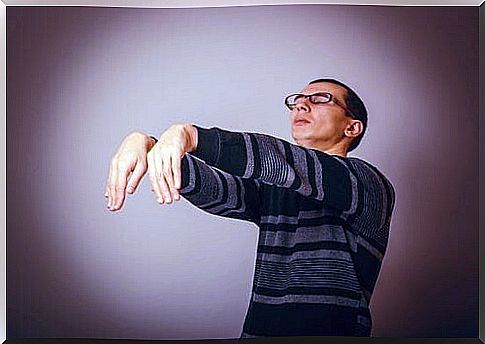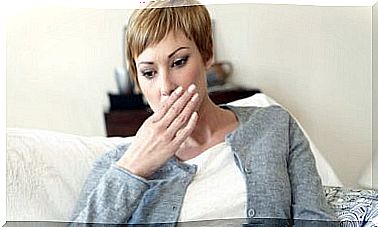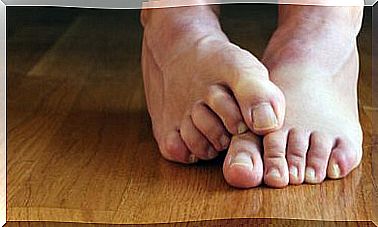Sleepwalking: A Particular Sleep Disorder
Sleepwalking tends to arouse a lot of interest due to the strange and disturbing characteristics of the behavior of the people who present it.
It is a sleep disorder that is characterized by the fact that the person wakes up partially. The essential feature of sleepwalking is the existence of repeated episodes of complex motor behaviors that begin during deep sleep.
Sleepwalkers often do things or talk while asleep, such as rubbing their eyes, walking around the room, or even leaving the house.
Also, a sleepwalker has the ability to avoid objects, but the mind and reasoning ability are severely impaired. It can be said that the person acts and speaks but is not aware of anything that is happening.
The prevalence of sleepwalking in the general population is estimated to be between 1% and 15%. The onset or persistence of this disorder in adults is common, although it is much higher in children. It is not usually associated with any psychiatric or psychological problem.
Sleepwalking and the first stage of non-REM sleep

This sleep disorder occurs during the first stage of non-REM sleep. To understand it better, we will explain in a simple way the different stages of sleep.
Not all rest or sleep is the same once we get into bed. Sleep is divided into cycles of approximately 90 minutes that repeat during the hours we sleep.
Within these cycles, different stages of two types of sleep occur : slow sleep and paradoxical sleep. Let’s see, next, the different stages classified into REM sleep and non-REM sleep.
Non-REM sleep
During non-REM sleep the following phases occur:
- Phase I or stage of numbness : comprises approximately the first 10 minutes of sleep. It is a transitional stage, from when we are in a waking period until we fall asleep.
- Phase II or light sleep stage : it occupies about 50% of our sleep cycles. Both breathing and heart rate slow down. During this phase is when people have the typical dream of falling off a cliff and wake up suddenly.
- Phase II or transition stage : it is a short stage, just two or three minutes in which we approach deep sleep.
- Phase IV or deep sleep stage : this stage occupies approximately 20% of the total sleep cycle. It is the most important when determining the quality of rest. It is very difficult to wake up. It is in this phase that the sleepwalker “wakes up.”
REM sleep or paradoxical sleep stage
It covers about 25% of the sleep cycle and lasts between 15 and 30 minutes. During this phase, we have a constant movement of the eyeballs under the eyelids.
It is characterized by having high brain activity, very similar to when we are awake, although our muscles are blocked. It is the phase in which we dream and capture information from the outside.
Causes of sleepwalking

As we said at the beginning of the article, sleepwalking has a higher prevalence in children than in adults. The reason is that adults, as they age, have a shorter duration of non-REM deep sleep.
This disorder tends to run in families. Also, fatigue, lack of sleep, and anxiety are associated with the problem. On the other hand, other factors that favor its development are:
- Alcohol, sedatives, and other medications.
- Conditions such as seizures.
- Mental disorders.
If you ever come across a person who is sleepwalking, the first thing to do is not panic and stay calm. Next, it is recommended to guide the person to bed speaking in a soft tone, with short and clear sentences.
Treatment
In many cases, simply improving sleep hygiene can eliminate the problem. If it does not improve with these measures, it is advisable to speak with a professional to discuss the possible factors causing the problem.
Some patients have claimed that they have been cured with techniques such as hypnotism. In addition, there is also drug treatment to try to improve it.
However, sleepwalking tends to decrease over the years because, as we have said, as we get older, the deep sleep phase is less and there is less chance of waking up sleepwalking.









